Poznan - Birthplace of a Nation
![]()
In Poznan, back in 966AD, Duke Mieszko I, founded the nation of Poland. Since those long ago days, Poznan has survived all sorts of occurrences, changes, evolution, revolutions, cataclysms, and modern developments. We found this city to be livable, welcoming and an excellent introduction to Poland!
During World War II, the city was greatly damaged. But today, the Stary Rynek, old market square, is a lively gathering place for residents and visitors alike. The rest of the city offers a range of historic and modern development, amazing shopping gallerias, an efficient railway and bus station, great public transit, and warm friendly folks.
In walks around the historic centre, we enjoyed views of the Stary Rynek, a large plaza with the elegant Town Hall in the centre. At noon, folks gather, peering up at a small window in the tower as two goats emerge and butt heads! There is a legend behind his and we'll leave it to our readers to discover it!
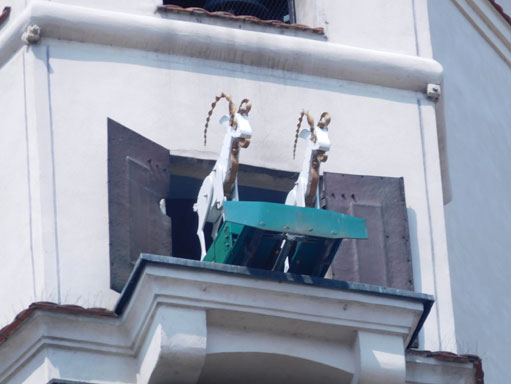
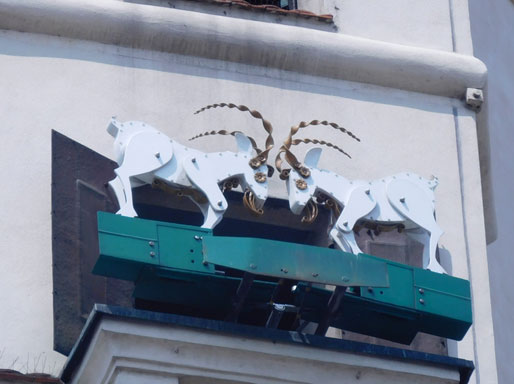
The plaza is surrounded by buildings in a style reminiscent of Grand Place in Brussels but more colorful! Cafes with dining on the plaza offer food and drink to locals and visitors alike. The old Town Hall is now an historical museum, relaying the stories of the town.
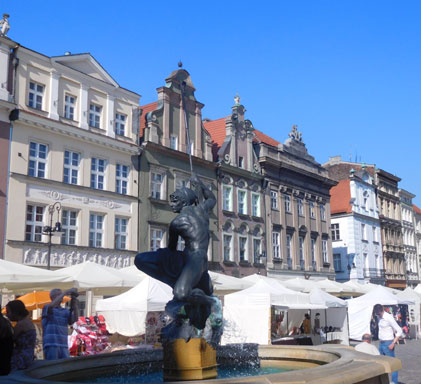
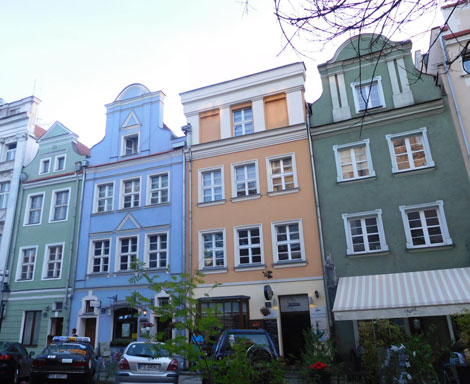
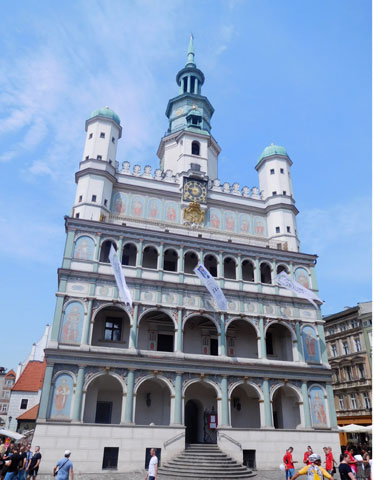
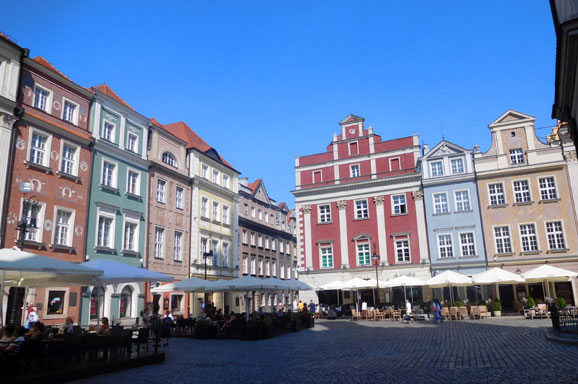
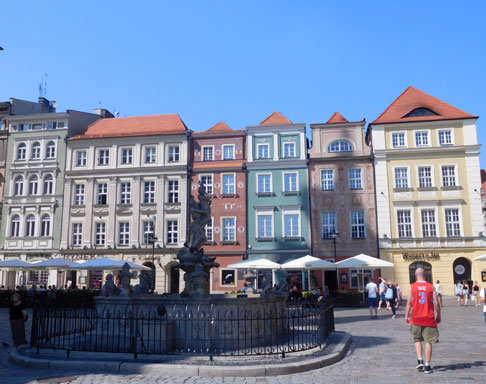
A short tram ride took us to Ostrow Tumski Island This was the original stronghold of Duke Mieszko in the days when enemies were all around, as we learned in a visit to the Porta Poznania Interactive Heritage Centre just across the Warta River. This amazing place introduced us to the early days of Poland in an enthralling way! Just what we needed to expand our fledgling knowledge of the country! We also admired the grand cathedral with its brick spires dominating the skyline and grand interior..
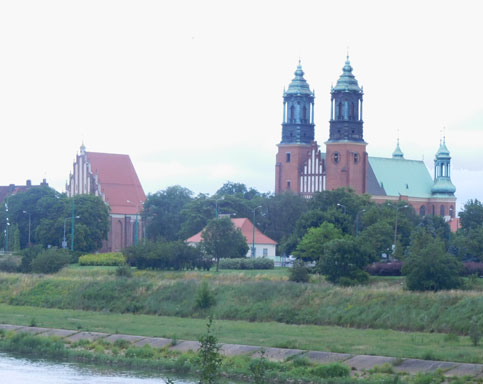
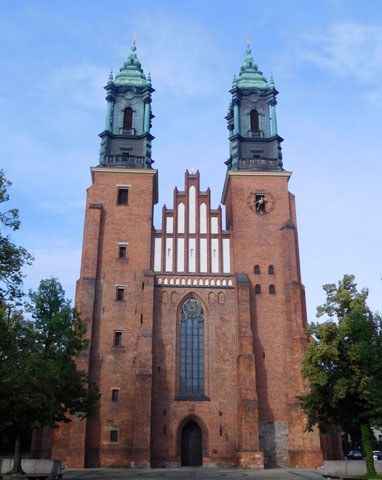
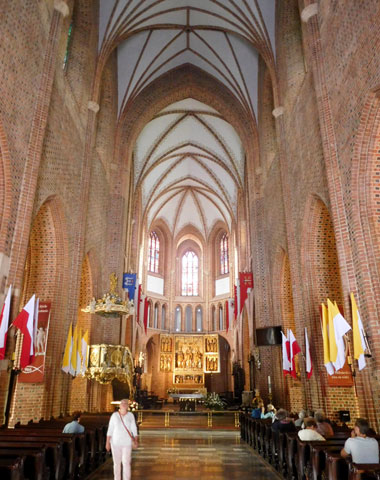
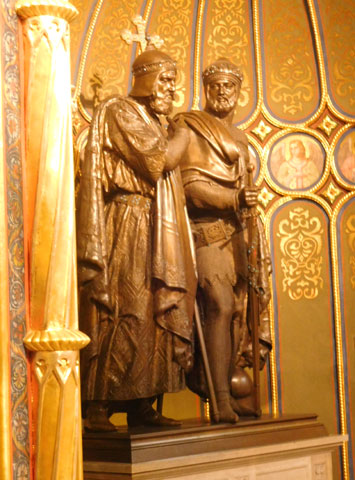
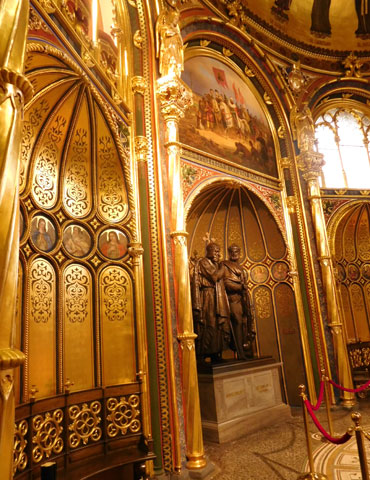
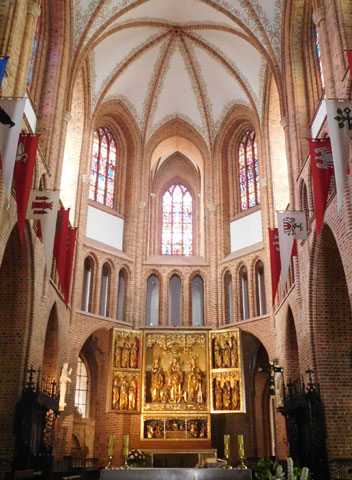
As we explored, it became very clear that Poznan is a city of wonderful churches. On our visits the amazing baroque glory was a grand introduction to the special styles and artistry the Polish people have embraced.. Two that we especially enjoyed were the:
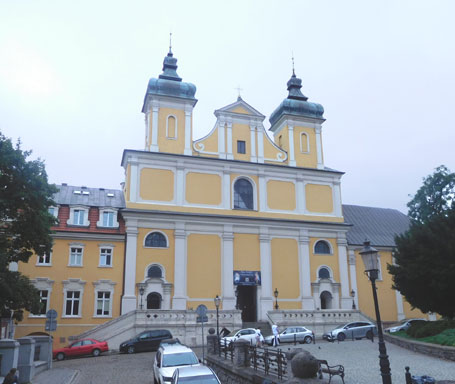
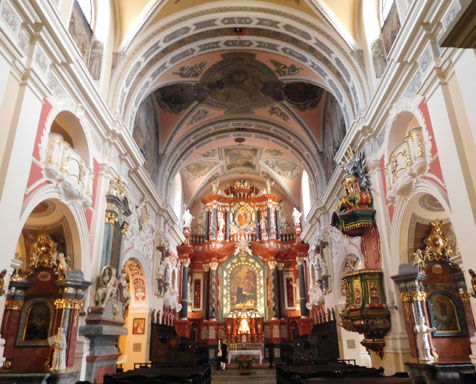
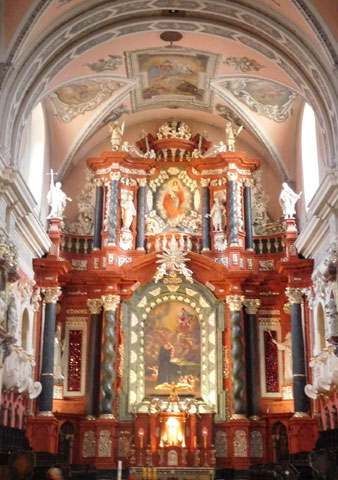
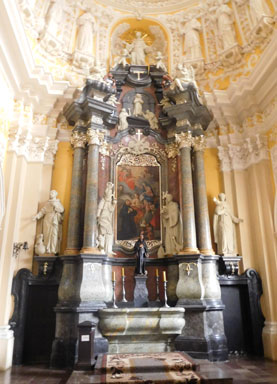
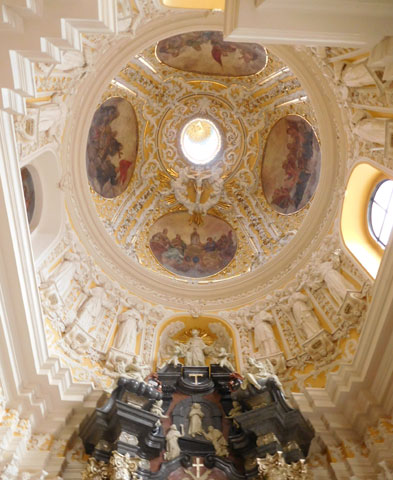
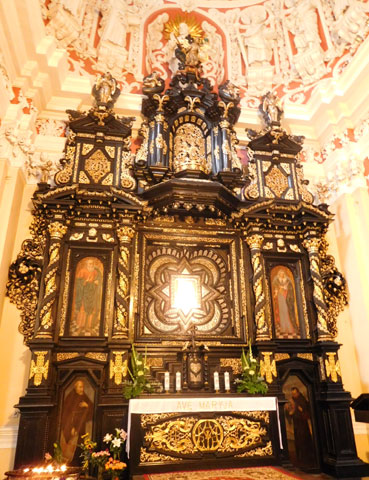
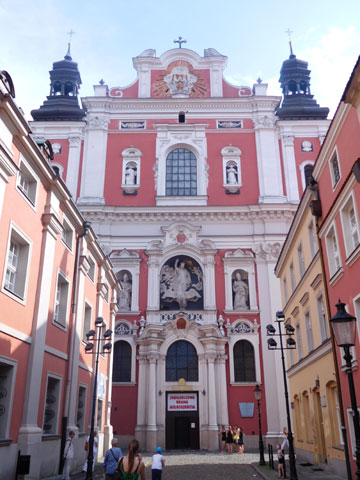
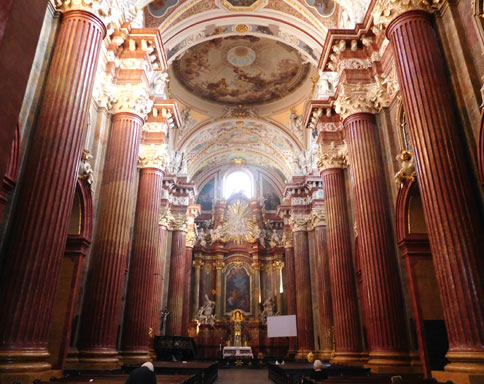
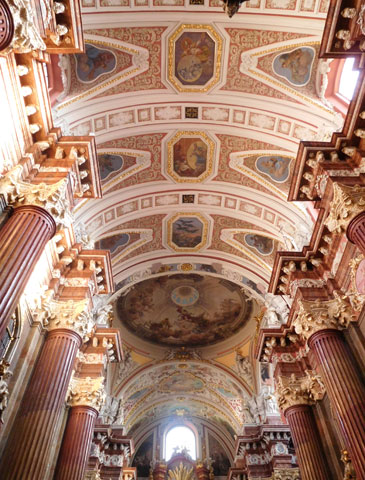
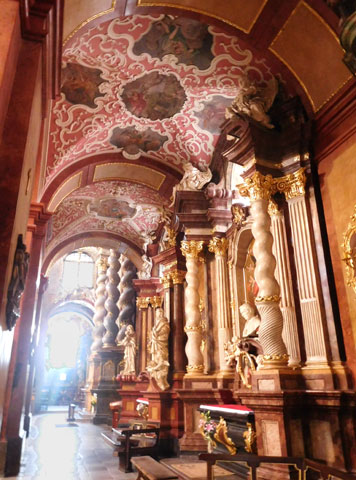
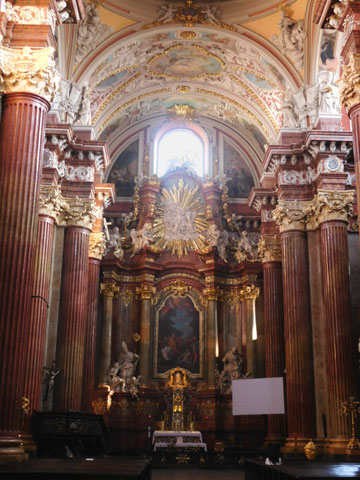
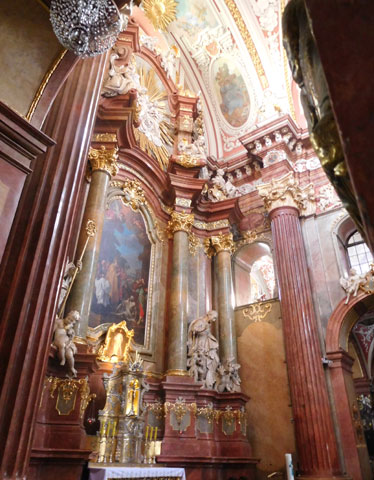
By total chance, we were in Poznan during the commemoration of the 60th anniversary of the massive workers uprising in 1956. This uprising of workers against the communist government precipitated a brutal response from the authorities who ordered in troops and tanks. People were killed and injured. Later that year, a similar uprising occurred in Hungary. The presidents of Hungary and Poland came together to commemorate these two momentous events. They spoke to the large crowd gathered for the commemoration along with Lech Walesa, the man who lead the shipyard workers in those critical times and later became President of Poland. We, along with much of Poland, watched on TV.
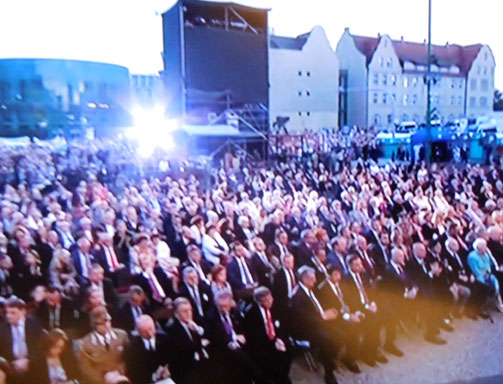
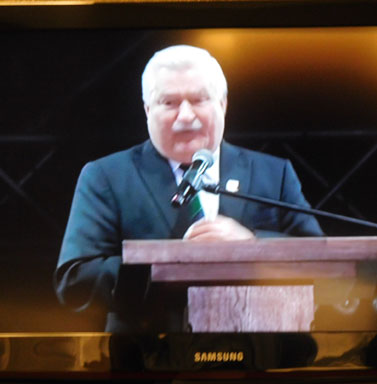
We visited the square where the commemeration ceremony was held. It is now dominated on one side by the former Kaiser's Palace, built in the 1800s, and on the other side by a former administrative building, now a performance space.
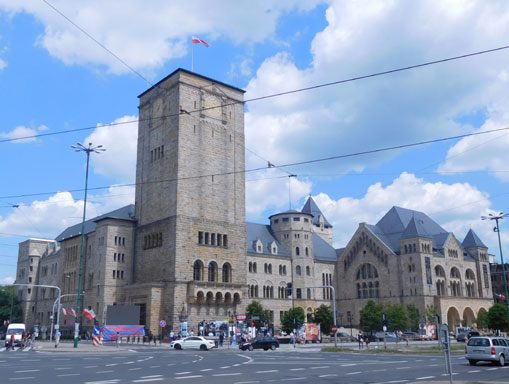
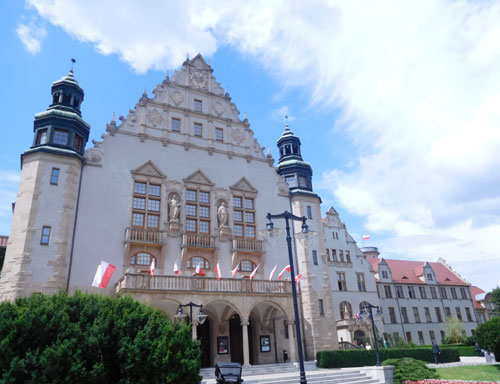
Large information boards documented these tragic events.
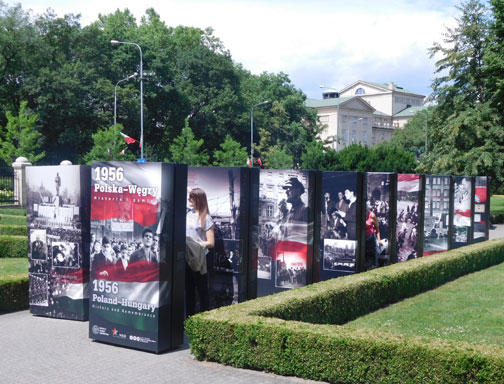

We also contemplated the monument to the victims, two crosses bound together, and paid respects at other memorials around the city to people who were killed, including a 13 year old boy.
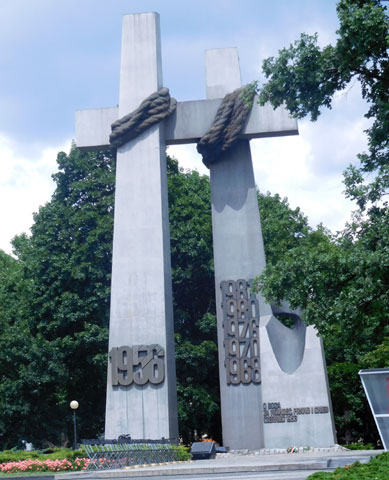
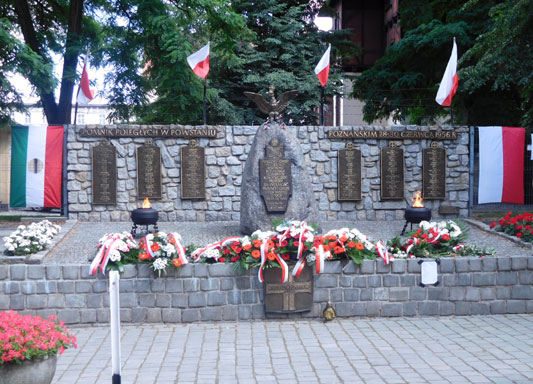
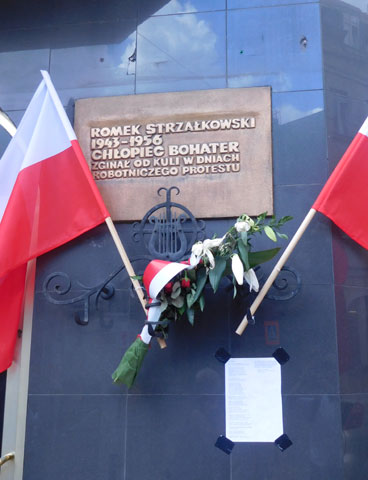
Now we were just beginning to understand some of the realities of life under communism.
Click here to return to our 'Summer 2016 - Back to Europe' page
Click here to return to our 'Searching the World for People Friendly Cities' page
![]()